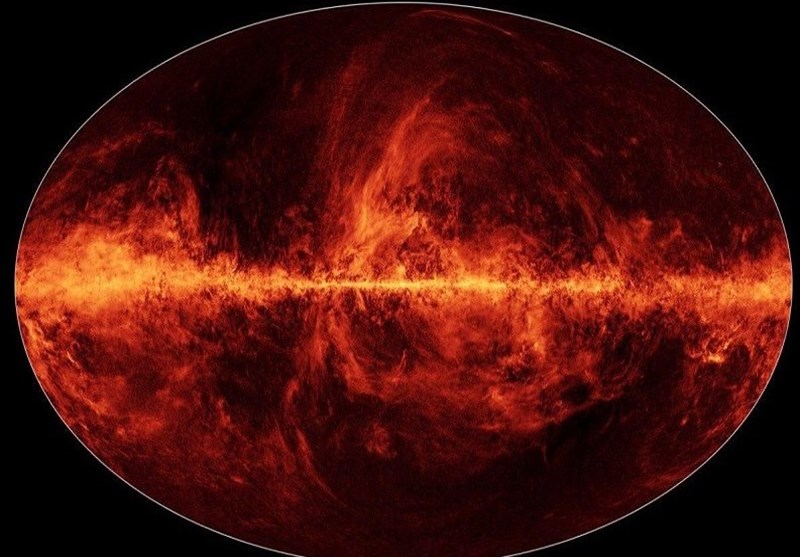Astronomers Unveil First 3D Map of Milky Way's Interstellar Dust
TEHRAN (Tasnim) - Astronomers have developed the first three-dimensional (3D) map detailing the properties of interstellar dust in the Milky Way, marking a significant breakthrough for precise astronomical observation and studies in astrochemistry and galactic evolution.
The research was led by Zhang Xiangyu, a Chinese doctoral student at Germany's Max Planck Institute for Astronomy, in collaboration with his advisor, Dr. Gregory Green.
The study utilized data from China's Large Sky Area Multi-Object Fiber Spectroscopic Telescope (LAMOST) and the European Space Agency's Gaia space observatory.
Their findings were published as the cover story in the latest issue of the journal Science.
The interstellar medium — matter and radiation in the space between stars — plays a key role in the Milky Way's material cycle and star formation.
Zhang explained that most elements heavier than hydrogen and helium in this medium exist as solid dust particles.
"Dust absorbs and scatters starlight, making distant stars appear dimmer and redder in a process known as 'extinction,'" Zhang said.
Astronomers often require extinction correction for accurate observations.
By combining precise stellar parameters from LAMOST with Gaia’s low-resolution spectroscopic data, researchers created a detailed catalog of absorption and scattering from interstellar dust for over 130 million stars.
This catalog enabled them to construct a 3D map of dust distribution and properties across the Milky Way, extending up to 16,308 light-years.
Zhang highlighted that this achievement capitalizes on LAMOST's strengths, including its wide field of view and multi-object spectroscopic capabilities.
The map reveals strong correlations between dust properties, star formation, and the structure of the Milky Way.
Zhang noted that the map also challenges previous assumptions about intermediate-density regions near dust cloud centers, suggesting potential new mechanisms for interstellar organic matter growth.
"Dust serves as the building material for planets like Earth and plays a catalytic role in the Milky Way's chemical evolution," Zhang said.
He added that the new 3D map "opens a new window for the study of dust and the Galaxy," offering valuable insights for astrochemical research, star formation, the galactic carbon cycle, and the origins of life.





